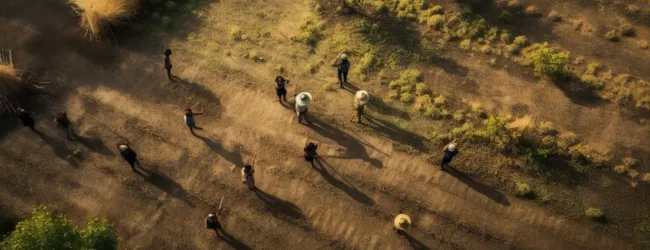Table of contents
- What is Shifting Agriculture?
- Where is Shifting Agriculture Practised in India?
- Why Do Farmers Use Shifting Agriculture?
- Step-by-Step: How Shifting Agriculture Works
- Crops Grown in Shifting Agriculture
- Shifting Agriculture Statistics (India)
- Economic Aspects of Shifting Agriculture
- Pros and Cons of Shifting Agriculture
- Government Policies & Sustainable Alternatives
- Transition from Shifting to Sustainable Farming
- Educational Efforts & Awareness
- Conclusion
- Frequently Asked Questions (FAQs)
Shifting agriculture, also known as slash-and-burn or jhum cultivation in India, is one of the oldest methods of farming where land is cleared, crops are grown for a few years, and then the land is left fallow to naturally regain its fertility. This traditional method is still practised in many tribal regions of India, but is often misunderstood. In this comprehensive guide, we’ll explore how shifting agriculture works, its advantages, where it is practised in India, and why it still matters in today’s agricultural landscape.
What is Shifting Agriculture?

Definition:
Shifting agriculture is a farming method where farmers clear a piece of forest land by cutting down vegetation and burning it (slash and burn), cultivate crops for a few years, and then move to a new area, leaving the old plot to recover naturally.
Where is Shifting Agriculture Practised in India?
Shifting agriculture is mainly practised in hilly and forested regions by tribal communities.
Major Indian States:
- Northeast India: Nagaland, Mizoram, Manipur, Arunachal Pradesh, Meghalaya, Tripura, Assam (Locally known as Jhum Cultivation)
- Central India: Madhya Pradesh, Odisha, Chhattisgarh
- Southern India: Andhra Pradesh, Telangana, parts of Kerala
Why Do Farmers Use Shifting Agriculture?
Key Reasons:
- Forest soil is initially rich in nutrients after burning.
- Low input cost – no fertilisers or machines are used.
- Traditional knowledge and community-based farming.
- Useful in areas with dense forest and hilly terrain.
✅ Highlight: It helps preserve local biodiversity and tribal cultures.
Step-by-Step: How Shifting Agriculture Works
| Step | Process |
|---|---|
| 1. Selection | A forest patch is chosen |
| 2. Clearing | Vegetation is cut down |
| 3. Burning | Leftover is burned to create ash-rich soil |
| 4. Sowing | Crops like rice, maize, or millets are grown |
| 5. Harvesting | After 2–3 years, the yield drops |
| 6. Shifting | Farmers move to a new patch of land |
💡 Pro Tip: If you want to start a Business but have too many doubts, connect with a Business expert from Boss Wallah for guidance – Check Out
Crops Grown in Shifting Agriculture

- Millets (Ragi, Bajra)
- Rice (Rainfed varieties)
- Maize
- Pulses
- Vegetables (local leafy greens)
Shifting Agriculture Statistics (India)
| Parameter | Details |
|---|---|
| Estimated Land Under Shifting Agriculture | Over 5 lakh hectares (mainly in NE India) |
| Number of People Practicing | More than 10 million, mostly tribal |
| Duration Land is Used Before Shifting | 1–3 years |
| Fallow Period (Recovery Time) | 3–10 years (now decreasing due to pressure) |
ALSO READ | Jhoom Farming: Definition, Significance, Practices & More
Economic Aspects of Shifting Agriculture
1. Crop Sale:
Farmers sell excess produce in local markets (e.g., maize, rice).
2. By-Product Sale:
Ash, firewood, and forest products (like bamboo and honey) are sold.
3. Cost of Setup:
- Low cost as there’s no machinery.
- Manual labour by family or community.
4. Challenges:
- Not suitable for large-scale commercial farming.
- Reduced soil fertility due to shorter fallow cycles.
- Deforestation and environmental concerns.
Pros and Cons of Shifting Agriculture
Advantages:
- Low-cost, low-input method.
- Sustainable if follow-up periods are long enough.
- Maintains tribal heritage and biodiversity.
Disadvantages:
- Deforestation risk.
- Poor yield in the long term.
- The government discouragement many areas due to environmental laws.
ALSO READ |Truck Farming: Meaning, Techniques, Benefits & More
Government Policies & Sustainable Alternatives
- North East Council (NEC) and ICAR support agroforestry projects to replace shifting agriculture with sustainable methods.
- Agroforestry + Permanent Cultivation Models are being introduced.
- Soil and water conservation programs are supported in hilly areas.
Transition from Shifting to Sustainable Farming

Alternative Practices:
- Terrace Farming – Prevents erosion on hills.
- Agroforestry – Combines trees and crops.
- Integrated Farming – Mix of crops, poultry, and livestock.
✅ Success Story: In Nagaland, some villages have adopted terrace farming with fruit trees like oranges and pineapples, increasing their income 2X in 5 years.
Educational Efforts & Awareness
- NGOs and Krishi Vigyan Kendras (KVKs) are educating tribal farmers about sustainable practices.
- Awareness about crop rotation and organic farming is increasing.
Need Expert Guidance?
Starting a business can be challenging, but you don’t have to do it alone! At Boss Wallah, our 2,000+ business experts are ready to provide valuable insights and guidance. Whether you need help with marketing, finance, sourcing, or any other area of any business, our business experts are here to help you succeed
Confused about Which Business to Start?
Want to start your own business but unsure which one to choose? Explore Boss Wallah, where you’ll find 500+ courses by successful business owners, featuring practical, step-by-step guides on starting and growing various businesses.
Find your perfect business idea today
Conclusion
Shifting agriculture may seem outdated, but it is deeply rooted in India’s tribal and ecological history. While the practice is declining due to population pressure and environmental concerns, with the right support and sustainable alternatives, the communities practising shifting agriculture can still thrive. Recognising their traditional knowledge while guiding them towards modern practices can create a balanced farming ecosystem in India.
Frequently Asked Questions (FAQs)
1. What is shifting agriculture in simple words?
It’s a farming method where land is cleared, used for farming for a few years, then left to recover naturally.
2. Where is shifting agriculture mostly practised in India?
Mainly in the northeastern states like Nagaland, Mizoram, and Manipur.
3. What crops are grown in shifting agriculture?
Rice, millets, maize, pulses, and vegetables.
4. Why do farmers leave the land after a few years?
Because the soil loses fertility, weeds start to grow.
5. Is shifting agriculture harmful?
If not managed well, it can cause deforestation and soil erosion.
6. What is jhum cultivation?
Jhum is another name for shifting agriculture, used in Northeast India.
7. How many people in India depend on shifting agriculture?
Around 10 million, mostly from tribal communities.
8. How long is land left fallow?
Usually 3–10 years, but now it’s often shorter.
9. Is shifting agriculture legal in India?
It is allowed in some tribal and scheduled areas under regulation.
10. Are there any alternatives to shifting agriculture?
Yes, such as terrace farming, agroforestry, and permanent agriculture.


